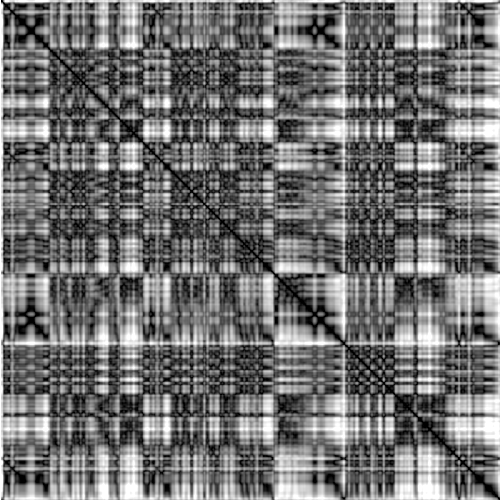05. Der Lindenbaum. (The Linden Tree)

Modified strophic form in E major containing six stanzas. [more]
Normalized variant of the well-known MFCC features (3 sec), the low bands are loosely correlated to timbre. [more]
Singer: Randall Scarlata (Baritone), Piano: Jeremy Denk. Recording of a performance at the Isabella Stewart Gardner Museum, Boston.
Source, License: CC BY-NC-ND 2.0
Information about our segmentation of »05. Der Lindenbaum«
Modified strophic form in E major containing six stanzas.
Coarse segmentation: ternary form ABA';
First part contains an intrumental introduction in E major as well as two slightly different segments which are divided by an intrumental interlude in e minor.
Both of these segments consists of two parts: Aa1+Ab and Aa2+Ab, respectively. The segment Aa1 corresponds to first stanza, Ab to second, Aa2 to third, and repetition of Ab to fourth stanza.
First segment Aa1+Ab is in E major; Aa2 and I2 in e minor, Ab is in E major again.
Middle part B has two subparts: one sung part and another instrumental interlude leading to the last part of the song.
This last part consists of repetitions Aa1, B, and I1. It corresponds to sixth stanza and its repetition.
Lyrics: Project Gutenberg
MFCC (Mel Frequency Cepstral Coefficients)
This feature was originally developed for speech analysis and speaker recognition. After transforming a musical signal in a spectrogram representation, MFCC-based features are computed by combining suitable frequency bands into percepually inspired Mel bands and applying a decorrelating discrete cosine transformation. Especially, the lower MFCC bands describe the coarse form of the spectral envelope which correlates to timbre. For deriving MFCC-ENS features (MFCC Energy Normalized Statistics), these MFCC features are quantized, smoothed (in temporal direction), and normalized with respect to the ℓ2-norm.
Furthermore, we present a novel variant of MFCC-ENS features by prior weighting the spectrogram by the second derivative of the spectral phase information in the time domain. This indicates slight changes in pitch which typically occur in vocals and which are not present in piano music. Especially the harmonics of piano-played notes are attenuated by this method which leads to smaller spectral envelopes in the piano sections and hence to more discriminative timbre-related MFCC features.
Literature
- Steven Davis, Paul Mermelstein: Comparison of parametric representations for monosyllabic word recognition in continuously spoken sentences, Readings in Speech Recognition 1990, pp. 65–74.
- Hiroko Terasawa, Malcolm Slaney, Jonathan Berger: The thirteen colors of timbre, WASPAA 2005, pp. 323–326.
- Dirk v. Zeddelmann, Frank Kurth: A construction of compact MFCC-type features using short-time statistics for applications in audio segmentation, EUSIPCO 2009, pp. 1504–1508.
